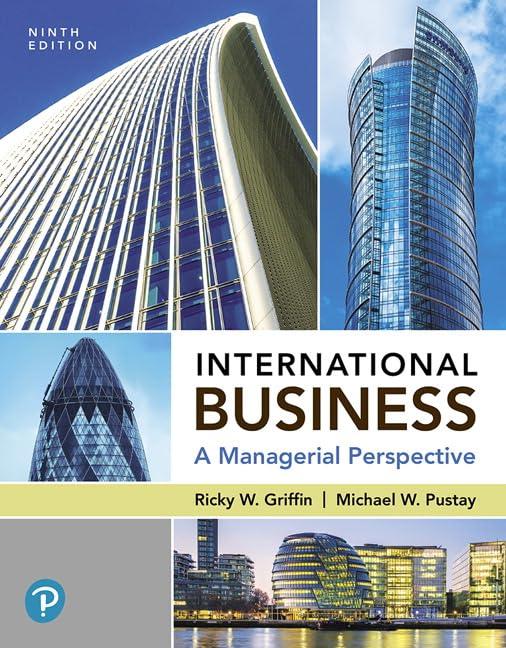Unilever is one of the worlds largest packaged consumer goods companies, trailing only Procter & Gamble. In
Question:
Unilever is one of the world’s largest packaged consumer goods companies, trailing only Procter & Gamble. In 2016, the firm had over 169,000 employees and annual revenues of around \($58\) billion. Among its best-known brand names are Lipton, Dove, Helene Curtis, Vaseline, and Q-tips. As the firm has grown, Unilever occasionally has set up other businesses to support its consumer products operations. For example, the firm once established a chemical unit to process the oils it uses to make margarine. At the time, managers believed this route provided them with a predictable and controllable source of materials. Fragrances and food flavorings operations were created for the same reason. In similar fashion, Unilever often has grown by acquiring other consumer products businesses, many of which had supporting operations as well.
Several years ago, Unilever was structured around five basic business groups: food products, personal-care products, soap/laundry products, cosmetics/perfume/hair products, and specialty chemicals. As the company continued to expand, however, this arrangement grew increasingly unwieldy. The methods and operations used to package, distribute, and promote the products and brands in the four consumer products groups were all very similar. Managers could be transferred across businesses easily, and knowledge about local market conditions in different countries was freely exchanged.
The specialty chemicals group, however, was an altogether different story, because it had no consumer products, only indirect linkages existed between its operations and those in the consumer products groups. For example, in some markets the chemical companies made chemicals that were then “sold” to Unilever’s consumer products businesses. These businesses in turn used the chemicals to create their consumer products for resale around the world. In the mid-1990s, Unilever’s board of directors grew concerned about the firm’s seeming inability to gain market share from Procter & Gamble. A new CEO was hired to remedy this situation and to improve Unilever’s financial performance.
After studying Unilever’s operations, the new CEO concluded that the firm’s specialty chemical businesses were part of the problem. For one thing, they did not meet the firm’s profitability targets. For another, some of the chemicals they were making could be bought on the open market for the same—and sometimes lower—prices. Finally, the firm had higher administrative costs due to the lack of synergy between its dissimilar units (chemical and consumer products).
As a result of these conclusions, Unilever executives decided to sell the specialty chemical units. The sale would eliminate inefficiencies created by the firm’s structure and generate cash that could be used to reduce debt and to finance new acquisitions in Unilever’s core business areas.
The CEO argued that the new international organization design would allow Unilever to focus all its attention on competing with Procter &
Gamble and other firms in the consumer products markets. Accordingly, Unilever negotiated the sale of its specialty chemical group to Britain’s Imperial Chemical Industries PLC for approximately \($8\) billion.
Part of the proceeds from this sale were then used to acquire Ben &
Jerry’s Homemade Inc., the quirky ice cream maker, and SlimFast Foods Company, a leading diet products firm. However, managers soon realized that selling the chemicals business and buying new food products businesses were not really addressing Unilever’s other problems, which were its slow decision making and weak control of worldwide marketing strategies. As a result, the company announced another major restructuring of Unilever, reorganizing it into two units rather than four.
One unit would be responsible for all food products and the other for all home and personal-care products. Each unit was then assigned its own chief executive responsible for all its global operations.
Case Questions
1. Identify the basic organization design issues at Unilever.
2. What seems to account for the frequent changes in organization design at Unilever?
3. Do the frequent changes in organization design at Unilever seem to be, overall, relatively positive or relatively negative?
4. Identify the basic control issues at Unilever from all three levels.
5. How do you think the control function should be organized and managed at Unilever?
Step by Step Answer:






